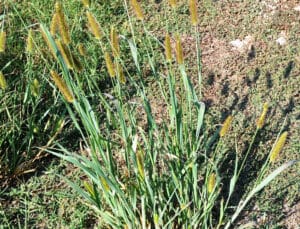Lamium amplexicaule
Description
This species can be found growing in moist or dry soils, in full sun or shade, and where turf is thin. It often grows in large, dense patches and is very conspicuous during spring and early summer.
Life Cycle
Corn speedwell is a member of the plantain family (Plantaginaceae) and has a winter annual life cycle. Plants produce vegetative growth and flowers from early spring through summer. This weed reproduces via seeds, which germinate during cool, moist conditions in late summer, fall, or spring.
Identification
Corn speedwell produces branching stems which grow close to the ground in prostrate fashion, then turn upright, giving rise to flowers. Leaves are arranged opposite to one another on lower stems and form clusters on elevated stems. Individual leaves on lower stems are approximately ½ to ¾-inch long, mostly oval, with serrated margins. Leaves on elevated stems are shorter and narrower than lower leaves, generally, do not have serrated margins, and are pointed at the tip. All leaf and stem surfaces are hairy.
Single flowers develop in leaf axils near the tips of elevated stems. Flowers are small, ¼ to ½-inch across, with blue petals and dark-blue stripes. As with other speedwell species, each flower has two stamens and a single style. Fruits are heart-shaped, hairy, and contain yellow seeds.
Cultural Control
Prevalence of corn speedwell can be reduced by increasing turf density through nitrogen fertilization, regular mowing, and the use of turfgrasses well-adapted to site conditions. This weed can be suppressed or controlled with various preemergence and postemergence herbicides.





